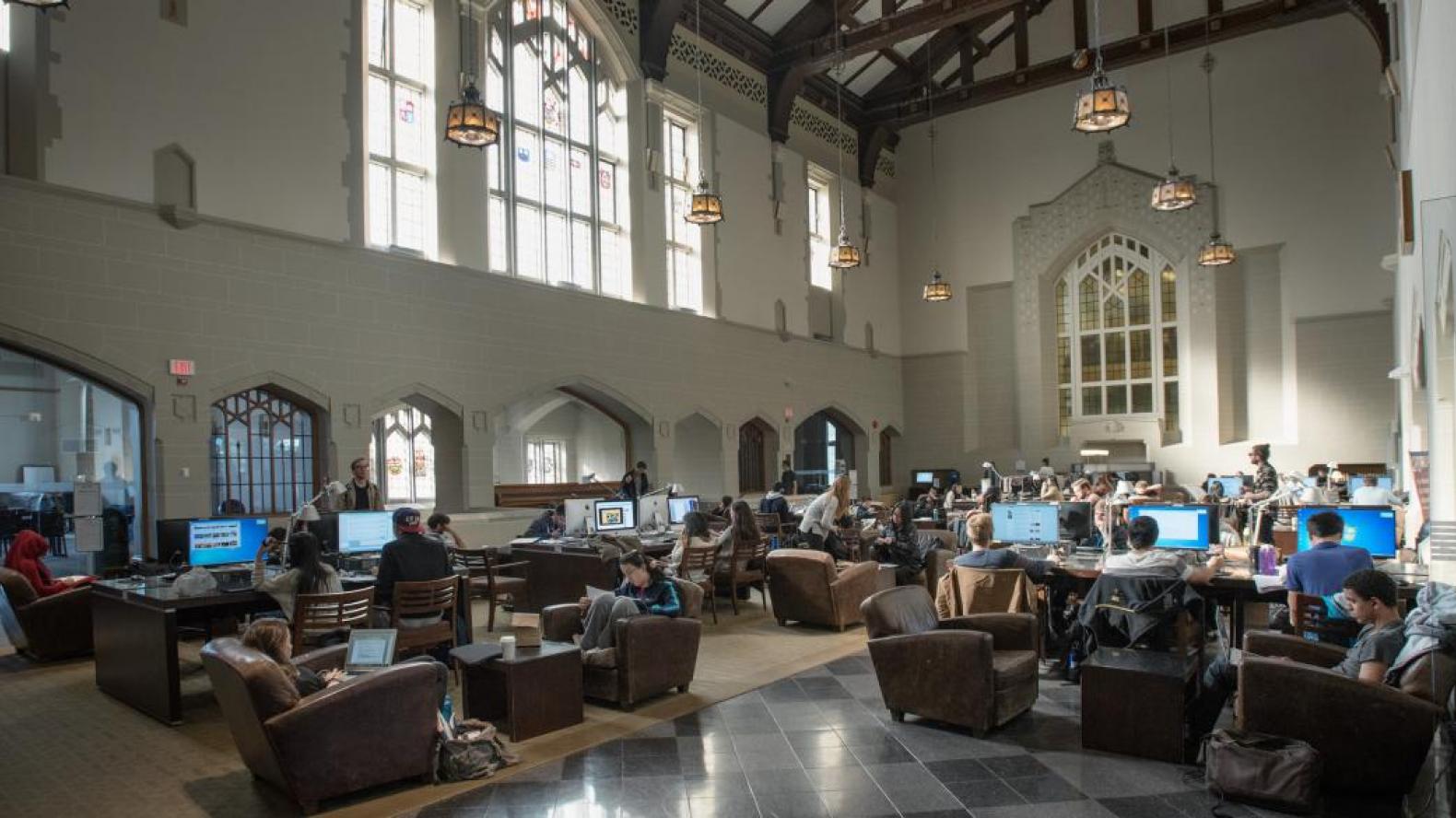
For the first time in Canada, a University of British Columbia engineer has found a way to use Wi-Fi to determine the number of building occupants and adjust ventilation accordingly – saving energy without sacrificing air quality.
“Every day, thousands of smartphones, laptops and tablets connect to the Wi-Fi network at UBC,” said Stefan Storey, who holds a master’s in mechanical engineering and a PhD in resource management and environmental studies from UBC.
“Our Bridge software anonymously counts the number of wireless devices in each room and passes the counts on to UBC’s building control system, which then adjusts airflow through the relevant building, practically in real time.”
Based on an occupant count, the control system can vary the airflow to a room, ramping it up for a busy lecture, or down during the times in between.
UBC worked with Storey to test the technology at the Irving K. Barber Learning Centre library, which serves thousands of students and staff. They found that it reduced energy consumption by five per cent over a period of 12 months, while maintaining air quality and occupant comfort.
David Woodson, UBC’s managing director, energy and water services, says the new system could help the university reduce greenhouse gas emissions by hundreds of tonnes and save as much as $100,000 in energy costs per year for core campus buildings. UBC is installing the technology in 10 more buildings over the next several months.
“This software uses the existing Wi-Fi network to provide good air quality and thermal comfort, so costs are lower and disruption is less compared to other occupancy detection technologies,” said Woodson, adding that UBC’s Wi-Fi users are completely protected as all private information is removed in strict compliance with Canadian privacy legislation.
For Storey, the project highlights the potential benefits of using Wi-Fi systems to create “smart buildings.” He co-founded the company Sensible Building Science around his innovation, with support from entrepreneurship@UBC, which helps UBC student, alumni, faculty and staff entrepreneurs as they take their ventures from idea to market. His patent-pending innovation is now being installed at campuses across B.C.
“As far as I know, this is the first technology in North America to use Wi-Fi access points as a sensor network and as a way to communicate with building control systems. As we continue to develop it, we can help many more buildings become much more responsive to occupant needs,” said Storey.
Republished with permission from UBC Public Affairs. Media contact: UBC Public Affairs